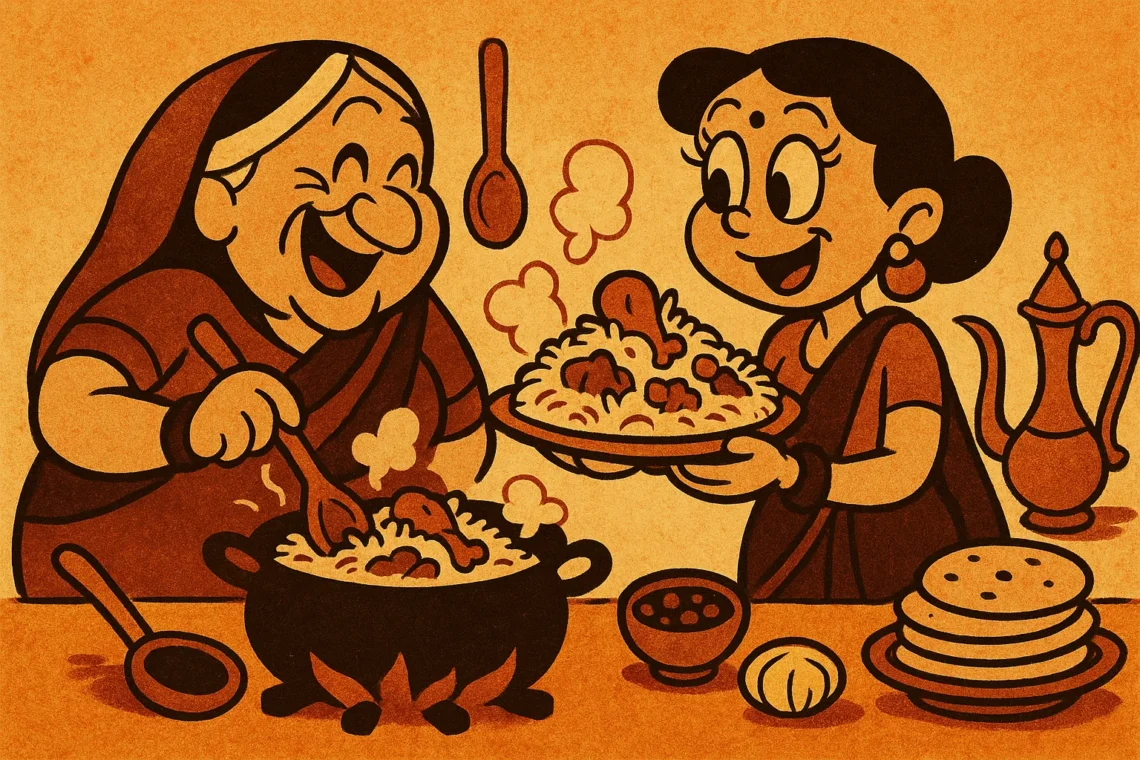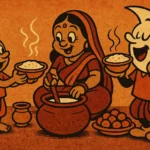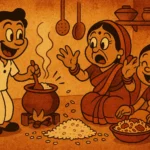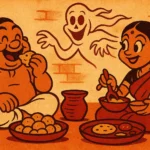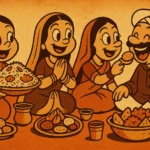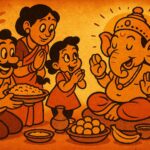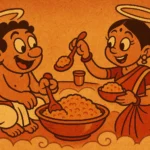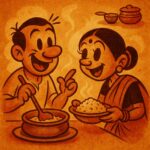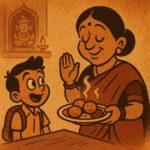As kids, we’re often told stories of magical lands, mysterious figures, and foods that have the power to change our lives—or our fortunes. Growing up in Mumbai, one such tale that sticks with me is that of the witch in the forest. Now, before you start picturing broomsticks and cackling voices, let me clarify: this witch wasn’t your stereotypical villain. Instead, she was someone whose food was so desirable, so tantalizing, that even the bravest of us could not resist a visit to her forest. It wasn’t the promise of dark magic that lured us; it was the idea of the food she was cooking—the warm, comforting aromas of something foreign yet deeply familiar. And, of course, the truth was, we all secretly yearned to taste whatever she was brewing up. As a child, I found myself thinking about that forest meal more than I probably should have.
There’s something inherently enchanting about food in myth. It’s more than just sustenance; it’s symbolic, it’s mystical, and sometimes, it’s the doorway to something greater. The witch’s food in that story wasn’t just an edible treat—it was a metaphor for the things we crave, the things we imagine we cannot have, and the places where food becomes more than a meal; it becomes an experience. From grandmother’s kitchen to Bollywood biryanis, the role of food in our stories often transcends the physical, weaving its way into the fabric of our culture in ways we don’t always realize.
The Witch’s Forest: A Place of Desire
In the story of the witch in the forest, the food she prepared was described as being “unlike anything we had ever tasted before.” Her cooking was not just about flavor—it was about the sensory overload of textures, aromas, and tastes that made the food irresistible. When we hear tales like this as children, there’s always a feeling of longing—food is often presented as a forbidden treasure, something elusive that can only be experienced by crossing a line, whether that’s venturing into the woods or simply surrendering to temptation. The witch’s food represented the unknown, the otherworldly, something better than anything we could imagine in our everyday lives.
In a way, the witch’s cooking is a reflection of how food in Indian culture—particularly in myths and stories—represents much more than the meal itself. Food is woven into the narrative, often standing in for larger themes: temptation, indulgence, reward, and transformation. Take, for example, the famous tale of Lord Ganesha and the modak. The modak, a sweet dumpling filled with coconut and jaggery, is often considered Ganesha’s favorite food. But in the mythology, the modak is not just a sweet—it symbolizes the satisfaction of spiritual and material desires, a reminder that balance in life comes from nourishing both the body and the soul. The witch’s food in the forest, in a similar vein, was symbolic of the unattainable desires we hold and the belief that sometimes, the act of consuming is a ritual, a metaphor for something deeper.
Bollywood Biryanis: A Metaphor for Abundance
If you’ve ever watched a Bollywood film, you know that food is never just food. The grand feasts in films like *Kabhi Khushi Kabhie Gham* or *Dilwale Dulhania Le Jayenge* are not just about the spectacle of the meal—they are about the connections they symbolize. The biryanis, the kebabs, the extravagant spreads—they are metaphors for abundance, for the grandiosity of love, and for the cultural wealth we inherit. Every plate of biryani in these films seems to have the power to bring families together, heal wounds, and create lasting memories. It’s no surprise, then, that the witch’s food in the forest, too, was part of a grander metaphor. Her meals were not just about filling stomachs—they were about creating experiences that lingered long after the meal was over.
Much like the biryani in *Kabhi Khushi Kabhie Gham*—where it’s not just the food but the love and familial ties it represents—food in Indian mythology and cinema has the ability to bring characters closer, transform relationships, and tell stories that are not just about the physical world but about emotional and spiritual fulfillment. There is a richness in food that mirrors the richness of human connection, and the witch’s cooking, mysterious as it was, served the same purpose: it was a symbol of something grander, something just out of reach yet deeply desired.
Grandmother Legends: The Wisdom of Food
As children, our grandmothers’ kitchens were filled with the wisdom of food—a knowledge passed down through generations. Food was a way of teaching us about life, love, and tradition. My own grandmother, who spent most of her days cooking, often told stories while preparing her meals. It was during those times that food became an extension of the lessons she taught: patience (waiting for the rice to cook perfectly), kindness (sharing a meal with others), and the deep value of family (cooking together). Her kitchen wasn’t just a place for preparing meals—it was a space for lessons, memories, and stories that would be carried on long after the food was gone.
Much like the witch’s cooking in the forest, the food my grandmother prepared was not just about taste—it was about connection. She could make something as simple as khichdi or aloo puri feel like an experience, one that transcended mere nourishment. Her food was magic, but not in the mystical, otherworldly sense. It was magic in the way it brought us together, grounded us, and taught us the stories of our culture. This, too, is why we are so drawn to the idea of the witch’s cooking—it represents the universal desire for something more than just food. It’s the deeper connections that are created over shared meals, the stories and lessons that are passed on through each dish prepared with love.
Edible Symbolism: More Than Just Ingredients
Food in Indian culture is layered with symbolism. Whether it’s the coconut offered during a pooja, the rice used in wedding ceremonies, or the sweets given to celebrate a new beginning, food serves as a vessel for meaning. The act of eating is not just about consumption—it’s a ritual, a way of connecting to something larger than ourselves. The witch’s cooking, then, becomes a symbol of that same desire for something more. It represents the things we crave, the things we can’t always have, and the power of food to transform us, body and soul.
In many ways, the witch in the forest represents the ultimate desire—a desire for something extraordinary, something magical. And while her food might have been a forbidden treasure in the story, it’s also a reminder of the power food holds in our lives. It can bring us together, transform our experiences, and serve as a metaphor for the deeper desires we carry with us. The next time you sit down to a meal, whether it’s a simple bowl of rice or an extravagant biryani, remember that food isn’t just about eating—it’s about connection, about tradition, and about the stories we tell through the act of sharing a meal.
Food as Myth, Magic, and Memory
The witch’s food in the forest wasn’t just about sustenance—it was about desire, about the longing for something that could make our lives richer and more meaningful. Much like the food in Bollywood films and the meals made by our grandmothers, it’s about connection, symbolism, and the deep bonds that are formed around food. In Indian culture, food has always been a metaphor for so much more than just hunger—it’s about love, family, and the things we can’t always touch but can always taste. So, the next time you sit down to a meal, take a moment to think about what it represents. Because, in the end, food is the thread that ties us all together, and it’s a thread woven with magic, metaphor, and myth.
Born in Mumbai, now stir-frying feelings in Texas. Writes about food, memory, and the messy magic in between — mostly to stay hungry, sometimes just to stay sane.

